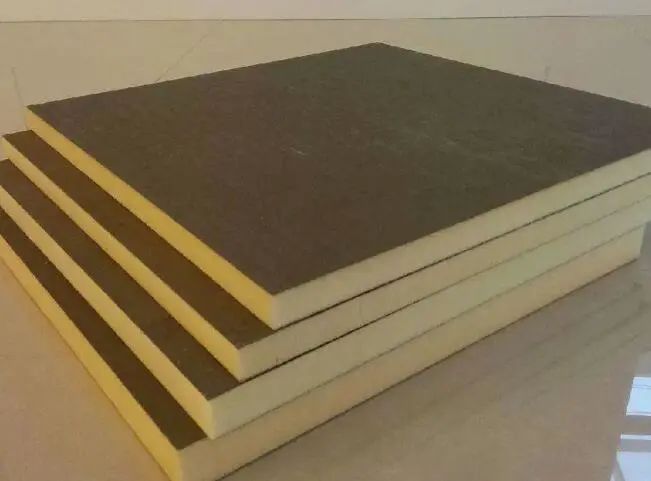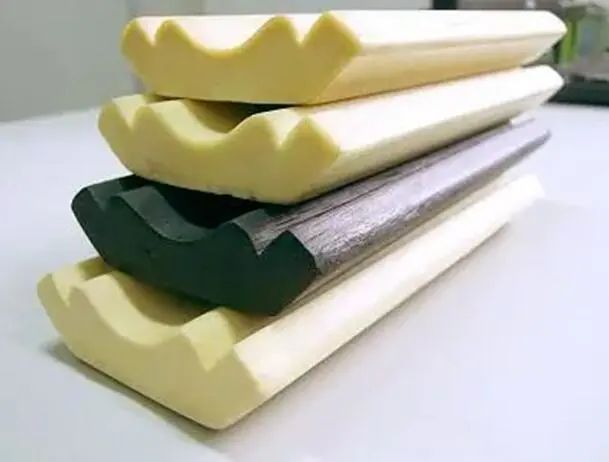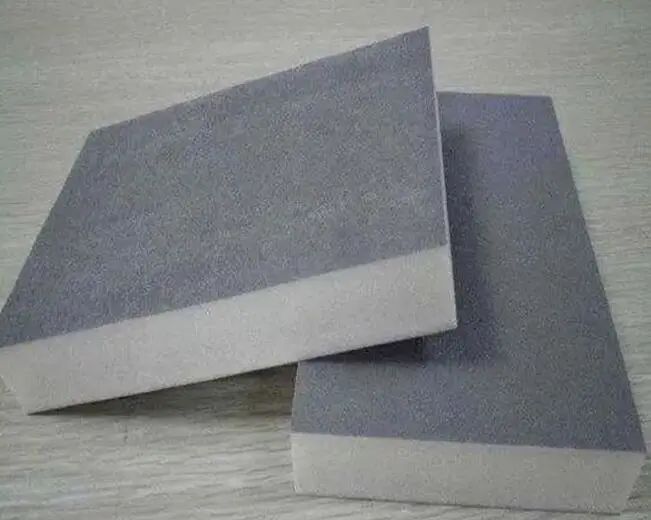Putu materiāli galvenokārt ietver poliuretānu, EPS, PET un gumijas putu materiālus utt., ko plaši izmanto siltumizolācijas un enerģijas taupīšanas, svara samazināšanas, strukturālās funkcijas, triecienizturības un komforta u.c. pielietojuma jomās, atspoguļojot funkcionalitāti, aptverot vairākas nozares, piemēram, būvmateriālus un konstrukciju, mēbeļu un sadzīves tehnikas, naftas un ūdens pārvades, transporta, militāro un loģistikas iepakojumu. Plašā pielietojuma klāsta dēļ pašreizējais putu materiālu tirgus apjoms gadā saglabā augstu 20% pieauguma tempu, kas ir straujas izaugsmes joma, kā arī jaunu materiālu pielietojums pašreizējā straujajā izaugsmē, kas ir radījis arī lielas bažas nozarē. Poliuretāna (PU) putas veido lielāko daļu no Ķīnas putu izstrādājumiem.
Saskaņā ar statistiku, putu materiālu globālā tirgus apjoms ir aptuveni 93,9 miljardi ASV dolāru, pieaugot par 4–5% gadā, un tiek lēsts, ka līdz 2026. gadam putu materiālu globālā tirgus apjoms, domājams, pieaugs līdz 118,9 miljardiem ASV dolāru.
Līdz ar globālās ekonomikas uzmanības maiņu, straujajām pārmaiņām zinātnē un tehnoloģijās, kā arī rūpnieciskās putošanas nozares nepārtraukto attīstību Āzijas un Klusā okeāna reģions ir ieņēmis lielāko daļu no globālā putošanas tehnoloģiju tirgus. 2020. gadā Ķīnas plastmasas izstrādājumu ražošana sasniedza 76,032 miljonus tonnu, kas ir par 0,6% mazāk nekā iepriekšējā gadā, salīdzinot ar 81,842 miljoniem tonnu 2019. gadā. 2020. gadā Ķīnas putošanas ražošana sasniedza 2,566 miljonus tonnu, kas ir par 0,62% mazāk nekā iepriekšējā gadā, salīdzinot ar 0,62% kritumu 2019. gadā.
Starp tām Guandunas province ieņem pirmo vietu putu ražošanā valstī ar 643 000 tonnu saražoto 2020. gadā; tai seko Džedzjanas province ar 326 000 tonnu saražoto produkciju; trešajā vietā ir Dzjansu province ar 205 000 tonnu saražoto produkciju; Sičuaņas un Šaņdunas provinces pēc kārtas ieņem ceturto un piekto vietu ar attiecīgi 168 000 tonnu un 140 000 tonnu saražoto produkciju. No kopējās valsts putu produkcijas 2020. gadā Guandunas province veidoja 25,1 %, Džedzjanas province — 12,7 %, Dzjansu province — 8,0 %, Sičuaņas province — 6,6 % un Šaņdunas province — 5,4 %.
Pašlaik Šeņdžeņa, kas ir Guandunas-Honkongas-Makao līča apgabala pilsētu klastera kodols un viena no attīstītākajām pilsētām Ķīnā visaptveroša spēka ziņā, ir izveidojusi pilnīgu rūpniecības ķēdi Ķīnas putu tehnoloģiju jomā, sākot no izejvielām, ražošanas iekārtām, dažādām ražotnēm un dažādiem gala patēriņa tirgiem. Globālās zaļās un ilgtspējīgas attīstības aizstāvības un Ķīnas "dubultās oglekļa" stratēģijas kontekstā polimēru putu nozarei ir jāsaskaras ar tehnoloģiskām un procesu izmaiņām, produktu un pētniecības un attīstības veicināšanu, kā arī piegādes ķēdes pārstrukturēšanu utt. Pēc vairākiem veiksmīgiem FOAM EXPO izdevumiem Ziemeļamerikā un Eiropā organizators TARSUS Group ar savu zīmolu rīkos "FOAM EXPO China" no 2022. gada 7. līdz 9. decembrim Šeņdžeņas Starptautiskajā konferenču un izstāžu centrā (Baoan New Hall). EXPO China savienos polimēru putu izejvielu ražotājus, putu starpproduktus un produktu ražotājus ar dažādiem putu tehnoloģiju gala patēriņa pielietojumiem, lai ievērotu un kalpotu nozares attīstībai!
Poliuretāns veido lielāko putojošo materiālu īpatsvaru
Poliuretāna (PU) putas ir produkts, kas veido lielāko putojošo materiālu īpatsvaru Ķīnā.
Poliuretāna putu galvenā sastāvdaļa ir poliuretāns, un izejviela galvenokārt ir izocianāts un poliols. Pievienojot atbilstošas piedevas, reakcijas produktā rodas liels putu daudzums, lai iegūtu poliuretāna putu produktus. Izmantojot polimēru poliolu un izocianātu, kā arī dažādas piedevas, lai pielāgotu putu blīvumu, stiepes izturību, nodilumizturību, elastību un citus rādītājus, rūpīgi samaisot un ievadot veidnē, lai paplašinātu ķēdes krustenisko reakciju, var veidot dažādus jaunus sintētiskus materiālus starp plastmasu un gumiju.
Poliuretāna putas galvenokārt iedala elastīgās putās, stingrās putās un izsmidzināmās putās. Elastīgās putas tiek izmantotas dažādos pielietojumos, piemēram, amortizācijai, apģērbu polsterēšanai un filtrēšanai, savukārt stingrās putas galvenokārt izmanto siltumizolācijas paneļiem un laminētai izolācijai komerciālās un dzīvojamās ēkās, kā arī (izsmidzināmo) putu jumta segumam.
Stingrām poliuretāna putām pārsvarā ir slēgtu šūnu struktūra, un tām ir izcilas īpašības, piemēram, laba siltumizolācija, viegls svars un vienkārša konstrukcija.
Tam piemīt arī skaņas izolācijas, triecienizturības, elektriskās izolācijas, karstumizturības, aukstuma izturības, izturības pret šķīdinātājiem utt. īpašības. To plaši izmanto ledusskapju un saldētavu kastes izolācijas slānī, aukstuma kameru un refrižeratoru izolācijas materiālā, ēku, uzglabāšanas tvertņu un cauruļvadu izolācijas materiālā, un neliels daudzums tiek izmantots arī ārpus izolācijas, piemēram, koka imitācijā, iepakojuma materiālos utt.
Stingras poliuretāna putas var izmantot jumtu un sienu izolācijā, durvju un logu izolācijā, kā arī burbuļu aizsargu blīvēšanā. Tomēr poliuretāna putu izolācija turpinās konkurēt ar stiklašķiedru un PS putām.
Elastīgas poliuretāna putas
Pēdējos gados pieprasījums pēc elastīgām poliuretāna putām pakāpeniski ir pārsniedzis stingru poliuretāna putu pieprasījumu. Elastīgās poliuretāna putas ir elastīgu poliuretāna putu veids ar noteiktu elastības pakāpi, un tas ir visbiežāk izmantotais poliuretāna produkts.
Produktu klāstā galvenokārt ietilpst augstas elastības putas (HRF), bloku sūklis, lēni elastīgas putas, paškorpusojošās putas (ISF) un daļēji stingras enerģiju absorbējošas putas.
Poliuretāna elastīgo putu burbuļu struktūra pārsvarā ir atvērtas poras. Parasti tām ir zems blīvums, skaņas absorbcija, elpojamība, siltuma saglabāšana un citas īpašības, galvenokārt tās izmanto kā mēbeļu polsterējuma materiālu, transporta sēdekļu polsterējuma materiālu, dažādus mīkstus polsterējuma laminētus kompozītmateriālus. Mīkstās putas tiek izmantotas rūpnieciskiem un civiliem mērķiem kā filtrācijas materiāli, skaņas izolācijas materiāli, triecienizturīgi materiāli, dekoratīvie materiāli, iepakojuma materiāli un siltumizolācijas materiāli.
Poliuretāna lejupvērsta izplešanās impulss
Ķīnas poliuretāna putu rūpniecība attīstās ļoti strauji, īpaši tirgus attīstības ziņā.
Poliuretāna putas var izmantot kā bufera iepakojumu vai polsterējuma bufera materiālu augstas kvalitātes precīzijas instrumentiem, vērtīgiem instrumentiem, augstas kvalitātes rokdarbiem utt. No tām var izgatavot arī smalkus un īpaši aizsargājošus iepakojuma konteinerus; tās var izmantot arī priekšmetu bufera iepakojumam, izmantojot putošanu uz vietas.
Poliuretāna cietās putas galvenokārt izmanto adiabātiskajā izolācijā, saldēšanas un saldēšanas iekārtās un aukstuma noliktavās, adiabātiskajos paneļos, sienu izolācijā, cauruļu izolācijā, uzglabāšanas tvertņu izolācijā, vienkomponentu putu hermētiķa materiālos utt.; poliuretāna mīkstās putas galvenokārt izmanto mēbelēs, gultasveļā un citos mājsaimniecības produktos, piemēram, dīvānos un sēdekļos, muguras spilvenos, matračos un spilvenos.
Galvenokārt tiek izmantots: (1) ledusskapju, konteineru, saldētavu izolācijā; (2) PU imitācijas ziedu ražošanā; (3) papīra apdrukā; (4) kabeļu ķīmiskajās šķiedrās; (5) ātrgaitas ceļu (aizsargslotiņu zīmju) ražošanā; (6) mājas dekorēšanā (putu plātņu dekorēšanā); (7) mēbelēs (sēdekļu spilvenos, matraču sūkļos, atzveltnēs, roku balstos utt.); (8) putu pildvielā; (9) kosmosa, autobūves nozarē (automašīnu spilvenos, automašīnu galvas balstos, stūrēs); (10) augstas kvalitātes sporta preču aprīkojumā (aizsarglīdzekļos, roku sargos, kāju sargos, boksa cimdu odere, ķiverēs utt.); (11) sintētiskajā PU ādā; (12) apavu rūpniecībā (PU zolēs); (13) vispārējos pārklājumos; (14) īpašos aizsargpārklājumos; (15) līmēs utt.; (16) centrālo vēnu katetros (medicīnas preces).
Arī poliuretāna putu attīstības smaguma centrs visā pasaulē ir pakāpeniski pārcēlies uz Ķīnu, un poliuretāna putas ir kļuvušas par vienu no visstraujāk augošajām nozarēm Ķīnas ķīmiskajā rūpniecībā.
Pēdējos gados straujā sadzīves saldēšanas iekārtu izolācijas, ēku enerģijas taupīšanas, saules enerģijas rūpniecības, automobiļu, mēbeļu un citu nozaru attīstība ir ievērojami palielinājusi pieprasījumu pēc poliuretāna putām.
"13. piecu gadu plāna" periodā, gandrīz 20 gadu laikā, sagremojot, absorbējot un atjaunojot poliuretāna izejvielu rūpniecību, MDI ražošanas tehnoloģija un ražošanas jauda ir starp pasaules vadošajiem līmeņiem, poliētera poliolu ražošanas tehnoloģijas un zinātniskās pētniecības un inovāciju iespējas turpina uzlaboties, turpina parādīties augstas klases produkti, un plaisa ar ārvalstu progresīvo līmeni turpina samazināties. 2019. gadā Ķīnā poliuretāna izstrādājumu patēriņš ir aptuveni 11,5 miljoni tonnu (ieskaitot šķīdinātājus), izejvielu eksports gadu no gada pieaug, un tā ir pasaulē lielākais poliuretāna ražošanas un patēriņa reģions, tirgus ir vēl vairāk nobriedis, un nozare sāk ienākt augstas kvalitātes attīstības tehnoloģiju modernizācijas periodā.
Saskaņā ar nozares mērogu, poliuretāna tipa putu materiālu tirgus apjoms veido lielāko daļu, sasniedzot aptuveni 4,67 miljonus tonnu, no kuriem galvenokārt mīksto putu poliuretāna putu materiāli veido aptuveni 56%. Līdz ar straujo elektrisko un elektronisko nozaru attīstību Ķīnā, īpaši ledusskapju un ēku tipa lietojumprogrammu uzlabošanos, poliuretāna putu materiālu tirgus apjoms turpina pieaugt.
Pašlaik poliuretāna nozare ir iegājusi jaunā posmā, kuras tēma ir inovāciju vadīta un zaļa attīstība. Pašlaik Ķīnā tādu poliuretāna pakārtoto produktu kā būvmateriālu, spandeksa, sintētiskās ādas un automobiļu ražošana ieņem pirmo vietu pasaulē. Valsts aktīvi popularizē ūdens bāzes pārklājumus, īsteno jaunu politiku ēku enerģijas taupīšanas jomā un izstrādā jaunus enerģijas transportlīdzekļus, kas arī paver milzīgas tirgus iespējas poliuretāna nozarei. Ķīnas ierosinātais "dubultā oglekļa" mērķis veicinās strauju ēku enerģijas taupīšanas un tīras enerģijas nozares attīstību, kas radīs jaunas attīstības iespējas poliuretāna izolācijas materiāliem, pārklājumiem, kompozītmateriāliem, līmēm, elastomēriem utt.
Aukstās ķēdes tirgus veicina pieprasījumu pēc poliuretāna cietajām putām
Valsts padomes Ģenerāldirektora izdotajā “Četrpadsmitajā piecu gadu plānā” aukstuma ķēdes loģistikas attīstības plāns liecina, ka 2020. gadā Ķīnas aukstuma ķēdes loģistikas tirgus apjoms pārsniedza 380 miljardus juaņu, aukstuma uzglabāšanas jauda bija gandrīz 180 miljoni kubikmetru, refrižeratoru transportlīdzekļu īpašumtiesības bija aptuveni 287 000, bet “Divpadsmitā piecu gadu plāna” perioda beigu periods pieauga attiecīgi 2,4, 2 un 2,6 reizes.
Daudzos izolācijas materiālos poliuretānam ir lieliskas izolācijas īpašības, un to plaši izmanto. Salīdzinot ar citiem materiāliem, poliuretāna izolācijas materiāli var ietaupīt aptuveni 20% no lielo aukstuma glabātuvju elektroenerģijas izdevumiem, un tā tirgus apjoms pakāpeniski paplašinās, attīstoties aukstuma ķēžu loģistikas nozarei. "14. piecu gadu" periodā, attīstoties pilsētu un lauku iedzīvotājiem, turpinot uzlabot patēriņa struktūru, liela mēroga tirgus potenciāls paātrinās aukstuma ķēžu loģistikas izlaišanu, radot plašu telpu. Plānā ierosināts, ka līdz 2025. gadam tiks veikta aukstuma ķēžu loģistikas tīkla sākotnējā izveide, aptuveni 100 valsts mēroga aukstuma ķēžu loģistikas pamatbāzu izvietošana un būvniecība, vairāku ražošanas un tirdzniecības aukstuma ķēžu izplatīšanas centru būvniecība, trīs līmeņu aukstuma ķēžu loģistikas mezglu iekārtu tīkla pamata pabeigšana un līdz 2035. gadam tiks pilnībā pabeigta moderna aukstuma ķēžu loģistikas sistēma. Tas vēl vairāk palielinās pieprasījumu pēc poliuretāna aukstuma ķēžu izolācijas materiāliem.
TPU putu materiāli iegūst ievērojamu nozīmi
TPU ir jaunās polimēru materiālu rūpniecības saullēkta nozare, pakārtotās lietojumprogrammas turpina paplašināties, nozares koncentrācija, lai vēl vairāk uzlabotu tehnoloģiskās inovācijas un tehnoloģijas, vēl vairāk veicinās vietējo aizstāšanu.
Tā kā TPU piemīt izcilas fizikālās un mehāniskās īpašības, piemēram, augsta izturība, augsta sīkstums, augsta elastība, augsts modulis, kā arī ķīmiskā izturība, nodilumizturība, eļļas izturība, triecienu absorbēšanas spēja un citas izcilas visaptverošas īpašības un labas apstrādes īpašības, to plaši izmanto apavu materiālos (apavu zolēs), kabeļos, plēvēs, caurulēs, automobiļu, medicīnas un citās nozarēs, tas ir visstraujāk augošais poliuretāna elastomēru materiāls. Apavu rūpniecība joprojām ir vissvarīgākais TPU pielietojums Ķīnā, taču tās īpatsvars ir samazinājies, veidojot aptuveni 30%, un plēvju un cauruļu pielietojumu īpatsvars TPU pakāpeniski pieaug, veidojot attiecīgi 19% un 15% tirgus daļu.
Pēdējos gados Ķīnā ir atbrīvotas jaunas TPU ražošanas jaudas, TPU ražošanas uzsākšanas temps 2018. un 2019. gadā nepārtraukti pieauga, 2014.–2019. gadā vietējā TPU ražošanas saliktais gada pieauguma temps sasniedza 15,46%. 2019. gadā Ķīnas TPU nozare turpina paplašināties, 2020. gadā Ķīnas TPU ražošana sasniedza aptuveni 601 000 tonnu, kas veidoja vienu trešdaļu no pasaules TPU ražošanas apjoma. Vairāk nekā.
Kopējā TPU ražošana 2021. gada pirmajā pusē ir aptuveni 300 000 tonnu, kas ir par 40 000 tonnām jeb 11,83% vairāk nekā 2020. gada attiecīgajā periodā. Runājot par jaudu, Ķīnas TPU ražošanas jauda pēdējo piecu gadu laikā ir strauji augusi, un arī ražošanas uzsākšanas temps ir uzrādījis pieaugošu tendenci, Ķīnas TPU ražošanas jaudai no 2016. līdz 2020. gadam pieaugot no 641 000 tonnām līdz 995 000 tonnām, un saliktais gada pieauguma temps ir 11,6%. No patēriņa viedokļa 2016.–2020. gadā Ķīnas TPU elastomēra patēriņa kopējais pieaugums, TPU patēriņš 2020. gadā pārsniedza 500 000 tonnu, kas ir 12,1% pieaugums salīdzinājumā ar iepriekšējo gadu. Paredzams, ka tā patēriņš līdz 2026. gadam sasniegs aptuveni 900 000 tonnu, un nākamo piecu gadu laikā tā gada pieauguma temps būs aptuveni 10%.
Paredzams, ka mākslīgās ādas alternatīva turpinās uzkarst
Sintētiskā poliuretāna āda (PU āda) ir poliuretāna kompozīcija, kas sastāv no epidermas, mikrošķiedras ādas, kuras kvalitāte ir labāka nekā PVC (pazīstama kā Rietumu āda). Tagad apģērbu ražotāji plaši izmanto šādus materiālus apģērbu ražošanā, ko parasti sauc par mākslīgās ādas apģērbu. PU ar ādu ir otrais ādas slānis, kura aizmugurējā puse ir govs āda, pārklāta ar PU sveķu slāni virspusē, tāpēc to sauc arī par laminētu govs ādu. Tās cena ir zemāka, un izmantošanas līmenis ir augsts. Līdz ar procesa maiņu tiek izgatavotas arī dažādas šķirņu pakāpes, piemēram, importēta divslāņu govs āda. Pateicoties unikālajam procesam, stabilajai kvalitātei, jaunām šķirnēm un citām īpašībām, pašreizējās augstas kvalitātes ādas cena un kvalitāte nav zemāka par īstās ādas pirmo slāni.
Pašlaik PU āda ir visizplatītākais sintētiskās ādas izstrādājums; un PVC āda, lai gan satur kaitīgus plastifikatorus, dažās vietās ir aizliegta, taču tās lieliskā izturība pret laikapstākļiem un zemā cena padara to joprojām konkurētspējīgu zemas klases tirgū; mikrošķiedras PU ādai, lai gan tās sajūta ir līdzīga ādai, tās augstākā cena ierobežo tās plašu izmantošanu, un tās tirgus daļa ir aptuveni 5%.
Publicēšanas laiks: 2022. gada 9. februāris








